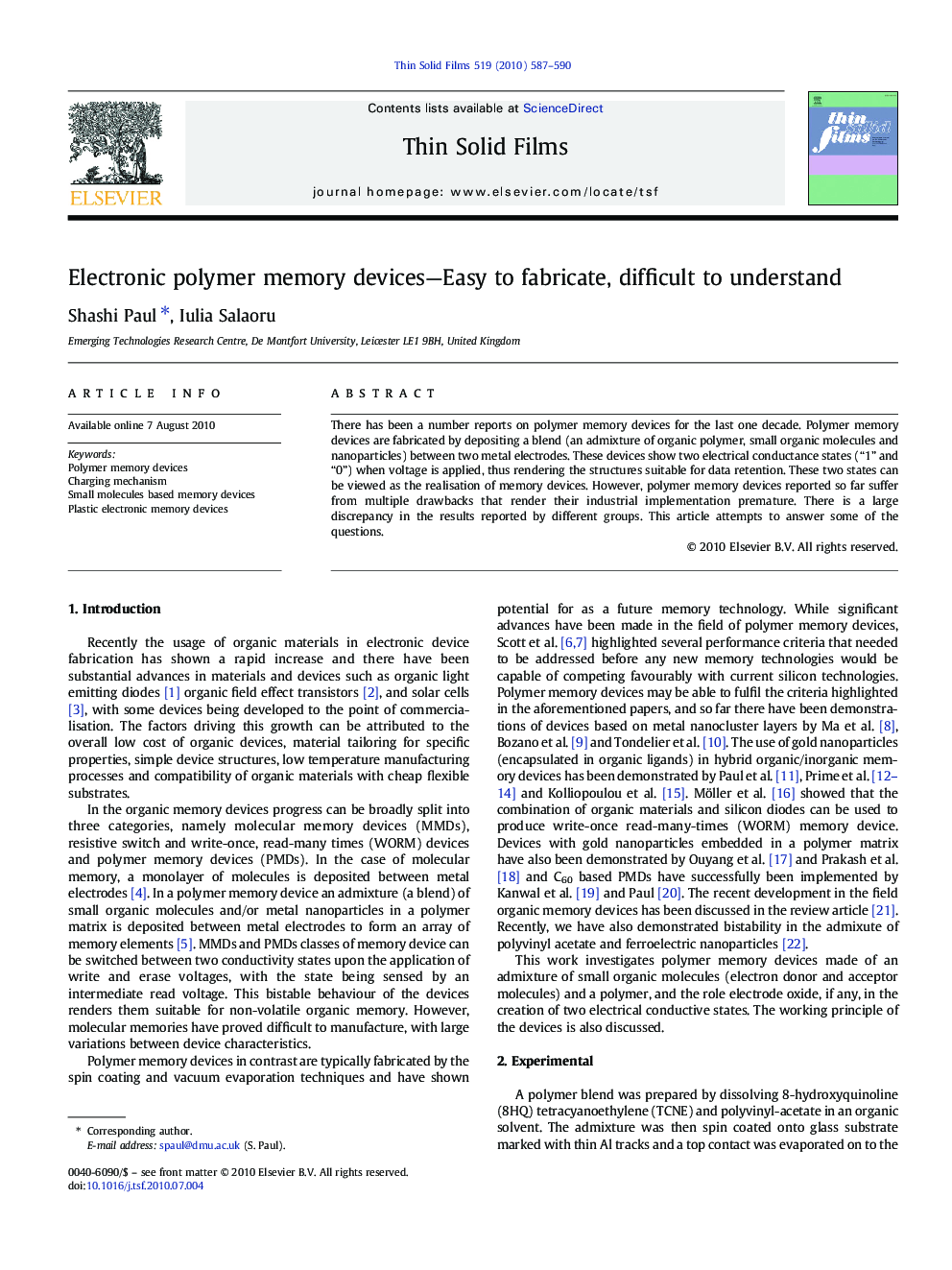| Article ID | Journal | Published Year | Pages | File Type |
|---|---|---|---|---|
| 1668695 | Thin Solid Films | 2010 | 4 Pages |
Abstract
There has been a number reports on polymer memory devices for the last one decade. Polymer memory devices are fabricated by depositing a blend (an admixture of organic polymer, small organic molecules and nanoparticles) between two metal electrodes. These devices show two electrical conductance states (“1” and “0”) when voltage is applied, thus rendering the structures suitable for data retention. These two states can be viewed as the realisation of memory devices. However, polymer memory devices reported so far suffer from multiple drawbacks that render their industrial implementation premature. There is a large discrepancy in the results reported by different groups. This article attempts to answer some of the questions.
Related Topics
Physical Sciences and Engineering
Materials Science
Nanotechnology
Authors
Shashi Paul, Iulia Salaoru,
